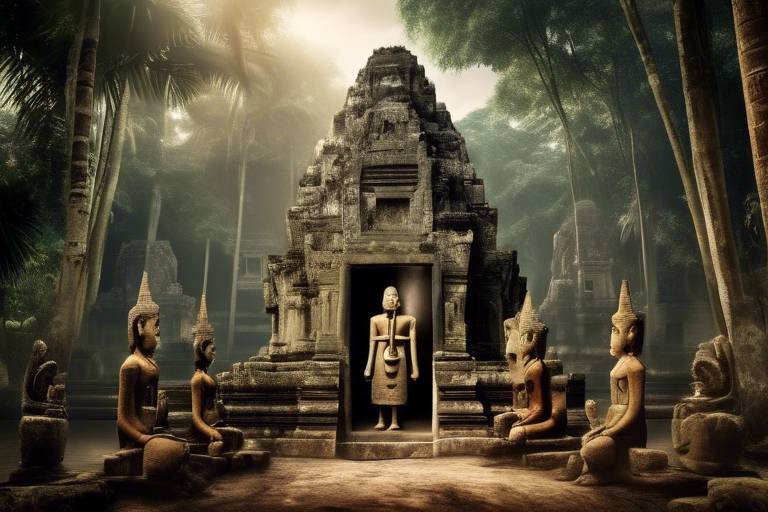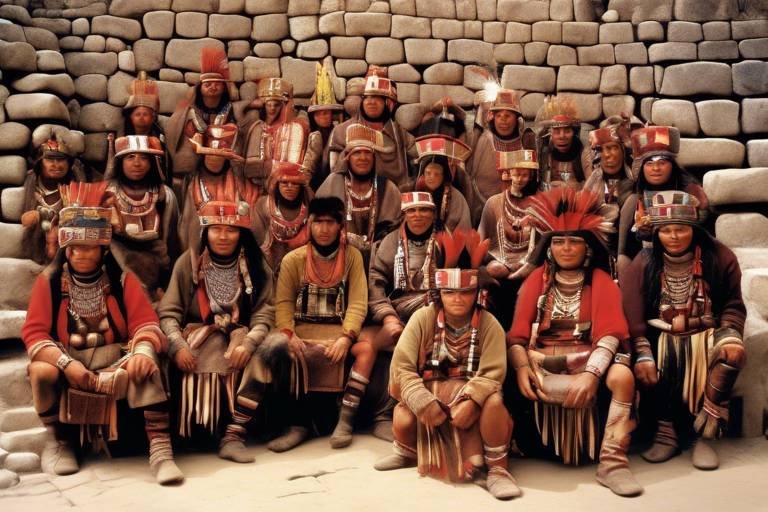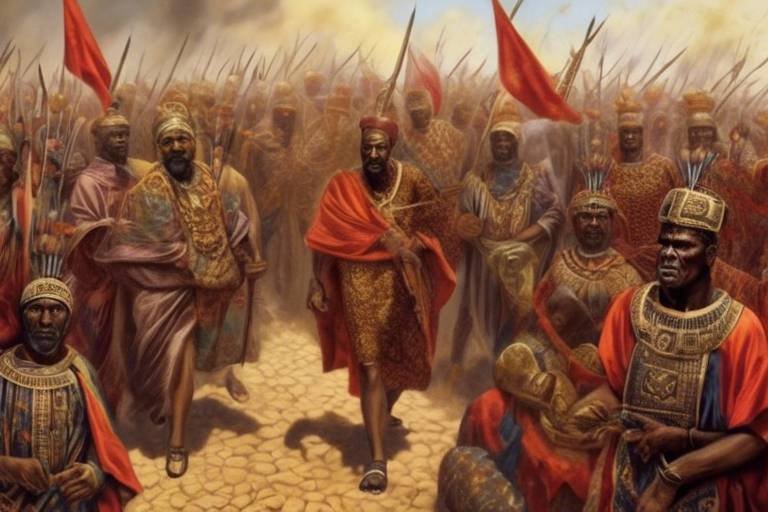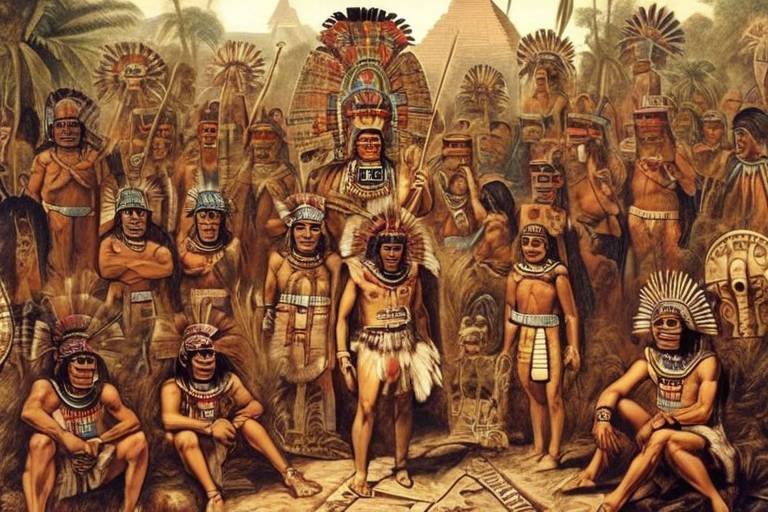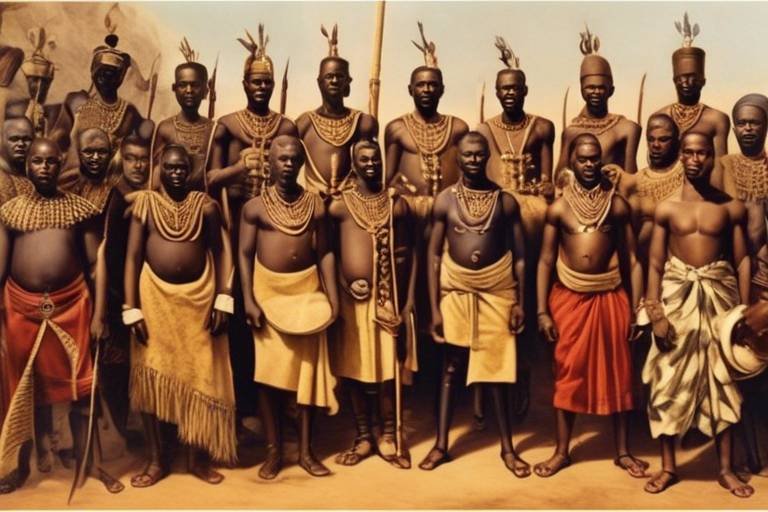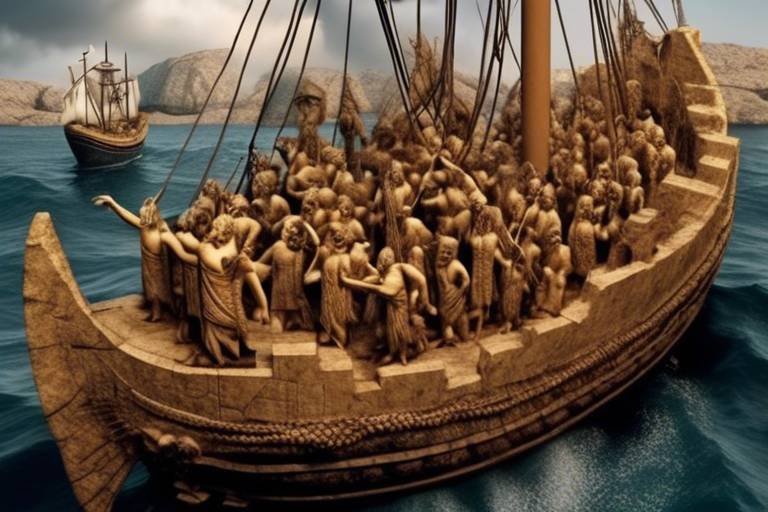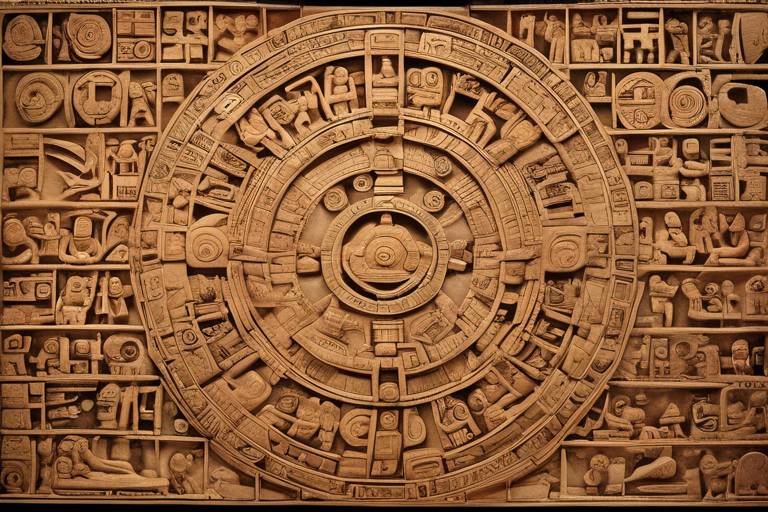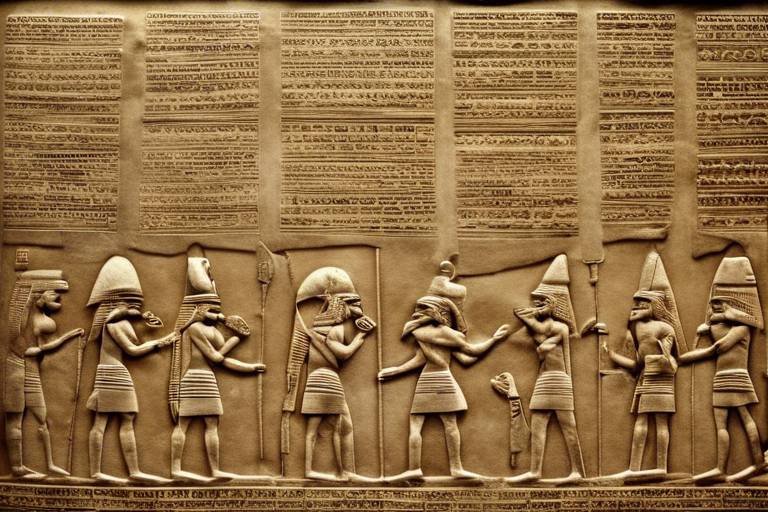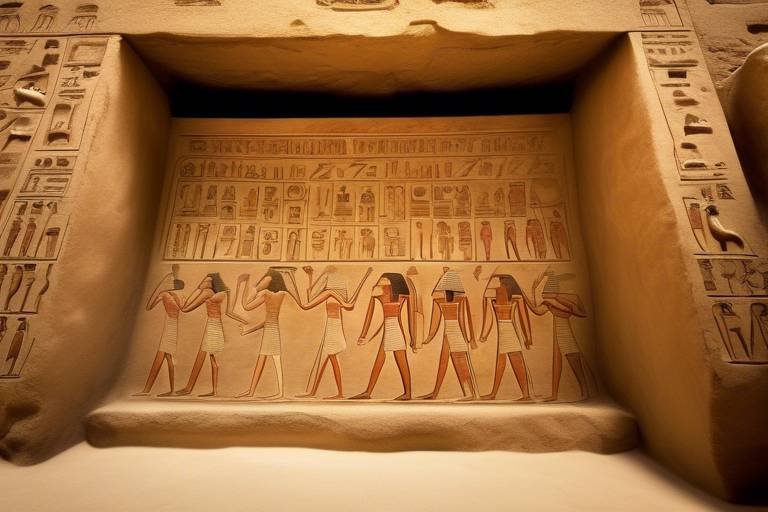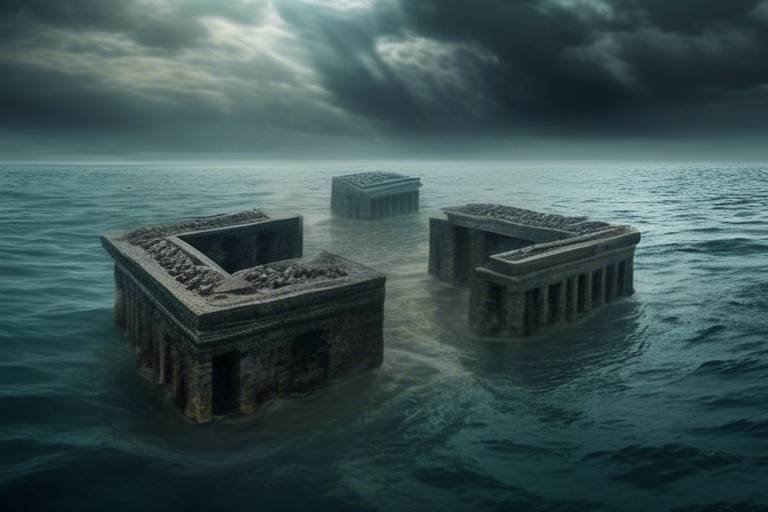The Forgotten Languages of Lost Civilizations
Have you ever wondered about the ancient languages that have faded into obscurity, leaving behind only traces of their existence? The Forgotten Languages of Lost Civilizations hold a mysterious allure, offering a glimpse into the communication systems of civilizations long gone. These linguistic relics speak volumes about the cultures, beliefs, and daily lives of ancient peoples, sparking curiosity and fascination among linguists, historians, and enthusiasts alike.
One such enigma is the Indus Script of the ancient Indus Valley Civilization. Despite numerous attempts, this script remains undeciphered, shrouding the society that created it in mystery. The intricate symbols and patterns hint at a sophisticated civilization, yet the true meaning eludes modern scholars, adding to the intrigue surrounding this ancient language.
Another puzzling language is the Linear A of Minoan Crete, a script that has resisted all efforts at translation. Through the study of this enigmatic writing system, researchers gain insights into the culture and trade networks of the Minoans, painting a vivid picture of a civilization lost to time.
The Voynich Manuscript Code presents yet another challenge, with its cryptic text and bizarre illustrations baffling experts for centuries. This mysterious manuscript continues to defy all attempts at decryption, fueling speculation about the secrets it may contain and the civilization that produced it.
On Easter Island, the Lost Language of the Easter Island Tablets remains locked within the rongorongo script, etched onto wooden tablets. These intricate symbols offer a tantalizing glimpse into the island's past, preserving the beliefs and history of its ancient inhabitants in a script that remains stubbornly indecipherable.
The Cretan Hieroglyphs of ancient Crete stand as silent witnesses to a bygone era, their meanings obscured by the passage of time. Unraveling these hieroglyphs could unveil the religious practices, governance structures, and daily rituals of the Minoan civilization, shedding light on a culture steeped in mystery.
Delving into the Etruscan Language of ancient Italy reveals a linguistic puzzle that has confounded scholars for centuries. The unique features of this isolated language offer tantalizing clues to the enigmatic Etruscan civilization, providing glimpses into their customs, beliefs, and social structure.
In early Ireland, the Ogham Inscriptions carved on stone monuments speak of a rich linguistic tradition that reflects the beliefs and values of the Celtic inhabitants. Deciphering this ancient alphabet poses a challenge, yet the insights gained from these inscriptions offer a window into the world of early Irish society.
The Ancient Mayan Hieroglyphs present a different story, one of successful decryption that has unlocked the history, mythology, and astronomical knowledge of the Maya civilization. Through their intricate writing system, the Mayans speak to us across the centuries, sharing their rich cultural heritage with those who seek to understand.

The Enigmatic Indus Script
Exploring ancient languages that have disappeared with time, shedding light on the communication systems of civilizations long gone and the efforts to decipher and preserve their linguistic heritage.
Delving into the mysterious script of the Indus Valley Civilization, a language yet to be fully decoded, raising questions about the society that used it and the complexities of deciphering ancient writing systems.
The Indus script remains one of the most intriguing mysteries of ancient civilizations. Dating back over 4,000 years, the symbols and inscriptions found on seals, tablets, and pottery from the Indus Valley have baffled linguists and archaeologists for decades. Despite numerous attempts, the script has eluded complete decipherment, leaving scholars to speculate on its meaning and purpose.
Imagine trying to solve a complex puzzle with missing pieces scattered across time. That is the challenge researchers face when attempting to unlock the secrets of the Indus script. Each symbol is like a piece of a larger picture, hinting at a sophisticated society with a rich cultural heritage waiting to be unveiled.
Some believe that the script represents a language, while others suggest it may have served a purely symbolic or religious function. The intricate nature of the script, with over 400 unique symbols identified so far, adds to the enigma surrounding the Indus civilization and its communication system.
Deciphering the Indus script is not just about cracking a code; it is about unraveling the history and identity of a lost civilization. By understanding the language of the Indus Valley, we can gain valuable insights into the social structure, trade networks, and belief systems of this ancient society.
Despite the challenges and uncertainties, researchers continue to study the Indus script with determination and curiosity, hoping to one day unlock the secrets hidden within its cryptic symbols.

The Elusive Linear A of Minoan Crete
Exploring ancient languages that have disappeared with time, shedding light on the communication systems of civilizations long gone and the efforts to decipher and preserve their linguistic heritage.
The Linear A script of Minoan Crete remains a profound mystery in the realm of ancient languages. Dating back to the Bronze Age, this enigmatic script has confounded linguists and archaeologists for decades. The symbols etched into clay tablets and seals offer tantalizing glimpses into the culture and society of the Minoans, yet the true meaning of these symbols eludes modern understanding.
Researchers have painstakingly studied the Linear A inscriptions in an attempt to unlock the secrets of this lost language. However, the complexity of the script, combined with the lack of a bilingual text for comparison, has thwarted all attempts at decipherment. The Linear A script is believed to represent an early form of the Minoan language, offering valuable insights into trade, administration, and religious practices of this ancient civilization.
Despite numerous theories and hypotheses put forward by scholars, the Linear A script remains one of the greatest linguistic puzzles of antiquity. The elusive nature of this script serves as a reminder of the vast depths of knowledge that may still lie buried beneath the sands of time, waiting to be unearthed and understood.

The Vanished Voynich Manuscript Code
Exploring ancient languages that have disappeared with time, shedding light on the communication systems of civilizations long gone and the efforts to decipher and preserve their linguistic heritage.
Delving into the perplexing Voynich manuscript, a mysterious text filled with strange illustrations and an unknown script that continues to baffle cryptographers and linguists alike. The Voynich manuscript, believed to have been written in the 15th century, remains undeciphered to this day, sparking numerous theories and speculations about its origin and purpose.

The Lost Language of the Easter Island Tablets
Exploring the rongorongo script of Easter Island takes us on a journey through the enigmatic language preserved on wooden tablets. These tablets, adorned with intricate symbols and glyphs, offer a window into the beliefs, traditions, and history of the ancient inhabitants of Easter Island. The mystery surrounding the rongorongo script lies in its undeciphered nature, leaving linguists and historians puzzled by the meanings encoded in these inscriptions.
Imagine standing amidst the lush landscapes of Easter Island, surrounded by towering moai statues and ancient structures, trying to unravel the messages hidden within the rongorongo script. Each symbol etched on the tablets represents a piece of a lost puzzle, a language waiting to be understood and brought back to life. The silence of the Cretan hieroglyphs echoes through time, urging us to decode the linguistic legacy of a civilization long forgotten.
As we delve deeper into the study of the Easter Island tablets, we encounter a complex system of writing that defies easy interpretation. The intricate designs and patterns carved into the wooden surfaces hint at a sophisticated communication system used by the islanders to record their stories, rituals, and knowledge. The quest to decipher the lost language of these tablets is a testament to human curiosity and determination to unlock the secrets of the past.
Through meticulous analysis and comparison with other known scripts, researchers strive to piece together the meanings behind the rongorongo symbols. The tantalizing prospect of unraveling the mysteries of Easter Island's lost language drives linguistic experts to explore new avenues of research and collaboration. Each discovery brings us closer to understanding the cultural richness and intellectual achievements of the island's ancient civilization.

The Silence of the Cretan Hieroglyphs
The ancient Cretan hieroglyphs stand as a silent testament to a civilization shrouded in mystery and intrigue. These intricate symbols etched into clay tablets and seals have puzzled archaeologists and linguists for centuries, offering tantalizing glimpses into the enigmatic world of the Minoans. Despite numerous efforts to decipher their meaning, the Cretan hieroglyphs have managed to retain their enigmatic aura, refusing to reveal the secrets of their ancient creators.
Unlike the hieroglyphs of ancient Egypt, which have been successfully decoded, the Cretan hieroglyphs continue to elude modern scholars. The intricate nature of the symbols, combined with the lack of a bilingual text or Rosetta Stone equivalent, presents a formidable challenge to those seeking to unlock their meaning. Each symbol is a puzzle piece in a larger enigma, hinting at a sophisticated writing system that remains just out of reach.
Through the study of these enigmatic symbols, researchers have gleaned insights into various aspects of Minoan life, including religious practices, trade networks, and societal structure. The intricate nature of the hieroglyphs suggests a society with a rich cultural tapestry, where written communication played a crucial role in both mundane and sacred contexts. Each symbol is a window into a bygone era, offering a tantalizing but incomplete glimpse into the lives of the Minoan people.
Despite the silence of the Cretan hieroglyphs, researchers remain undeterred in their quest to unravel their mysteries. New technologies and interdisciplinary approaches continue to shed light on these ancient symbols, bringing us closer to understanding the language of a civilization lost to time. The silence of the Cretan hieroglyphs may be deafening, but it is a silence that only serves to fuel the curiosity and determination of those who seek to decipher the secrets of the past.

The Unspoken Words of the Etruscan Language
Shrouded in mystery and intrigue, the Etruscan language stands as a testament to the enigmatic nature of ancient civilizations. Originating in ancient Italy, the Etruscan language has long puzzled linguists with its unique structure and isolated roots. Despite numerous efforts to decipher this ancient tongue, much of it remains a mystery, leaving scholars to speculate on the cultural and societal aspects of the Etruscan civilization.
The Etruscan language, unlike many others of its time, lacks direct linguistic connections to known languages, making it a linguistic isolate. This isolation has presented a significant challenge in unraveling the grammar, vocabulary, and syntax of the Etruscan script. Linguists have meticulously studied surviving inscriptions, artifacts, and tomb paintings in an attempt to piece together the linguistic puzzle left behind by the Etruscans.
One of the key features of the Etruscan language is its use of a unique alphabet derived from the Greek alphabet. This adaptation of the Greek script for Etruscan purposes has provided valuable insights into the phonetic values of the Etruscan characters. However, the meanings of many words and phrases remain elusive, hindering a comprehensive understanding of the language.
Through the study of Etruscan inscriptions found on tombs, temples, and artifacts, researchers have gained glimpses into the religious beliefs, social structure, and daily life of the Etruscan people. The inscriptions often depict scenes of banquets, rituals, and mythological figures, offering tantalizing clues to the cultural practices of this ancient civilization.
Despite centuries of scholarly efforts, the Etruscan language continues to guard its secrets, challenging linguists and historians to unlock the unspoken words of this ancient tongue. The quest to decipher the Etruscan script not only sheds light on the Etruscan civilization but also highlights the enduring allure of lost languages and the mysteries they hold.

The Fading Ogham Inscriptions of Early Ireland
The Fading Ogham Inscriptions of Early Ireland tell a story of a unique writing system that holds the secrets of ancient Celtic beliefs and language. The Ogham script, carved on stone monuments, stands as a testament to the early inhabitants of Ireland, offering a glimpse into their culture and spirituality. Each inscription represents a connection to the past, a fading echo of a language that once thrived in the lush green landscapes of early Ireland.
These inscriptions, with their linear strokes and notches, serve as a window into the beliefs and values of the early Celtic people. Each mark on the stones carries meaning, telling tales of warriors, druids, and the natural world that surrounded them. Deciphering these fading inscriptions requires a keen eye and a deep understanding of the ancient Celtic language and symbolism.
As time passes, the Ogham inscriptions face the threat of fading into obscurity, their messages becoming harder to decipher with each passing year. The challenge of preserving and interpreting these ancient writings lies in capturing the essence of a culture long gone, piecing together fragments of a linguistic puzzle that holds the key to understanding the early Celtic civilization.
Exploring the Ogham inscriptions is like unraveling a mystery, where each stroke of the script reveals a piece of the past waiting to be rediscovered. The fading nature of these inscriptions adds to their allure, inviting scholars and enthusiasts to delve deeper into the rich tapestry of early Irish history and culture.

The Silenced Scripts of the Ancient Mayans
When it comes to the ancient Mayan civilization, one cannot overlook the intricate hieroglyphic writing system that adorned their temples, monuments, and codices. These glyphs, a combination of symbols and images, were not merely decorative but served as a complex script that conveyed the rich history, mythology, and astronomical knowledge of the Mayan people.
Deciphering the Mayan hieroglyphs was no small feat and required the dedicated efforts of scholars and linguists over many decades. The breakthrough in understanding this ancient script came in the 20th century, unlocking a treasure trove of information about the Mayan civilization that had long been shrouded in mystery.
Through the decipherment of the Mayan glyphs, researchers gained insights into the sophisticated calendar system of the Maya, their religious beliefs, political structures, and intricate knowledge of astronomy. Each glyph represented a sound, a word, or a concept, allowing the Mayans to record historical events, rituals, and astronomical observations with remarkable detail.
The Mayan hieroglyphic script not only provided a means of communication but also served as a tool for the elite to maintain power and authority, as well as a medium for preserving their cultural heritage for future generations. The intricate nature of the glyphs reflects the complexity and depth of Mayan society, showcasing their advanced intellectual and artistic achievements.
Despite the challenges posed by the Spanish conquest and the subsequent suppression of Mayan culture, the decipherment of the hieroglyphs has enabled us to glimpse into the vibrant and sophisticated world of the ancient Maya. The silenced scripts of the Mayans have now been brought back to life, speaking volumes about a civilization that thrived in the jungles of Mesoamerica.
Frequently Asked Questions
- What are some examples of lost languages discussed in the article?
The article explores various lost languages such as the Indus Script, Linear A of Minoan Crete, the Voynich Manuscript Code, the Easter Island Tablets, Cretan Hieroglyphs, Etruscan Language, Ogham Inscriptions of Early Ireland, and the Ancient Mayan hieroglyphic writing.
- Why is it important to study and decipher these ancient languages?
Studying and deciphering these ancient languages provide valuable insights into the cultures, societies, beliefs, and histories of the civilizations that used them. It helps us understand the communication systems, trade networks, religious practices, and daily life of these lost civilizations.
- Are there ongoing efforts to decode these lost languages?
Yes, linguists, archaeologists, and cryptographers continue to work on deciphering these ancient scripts using advanced technologies and interdisciplinary approaches. The quest to unlock the secrets of these lost languages is a challenging but rewarding endeavor.




